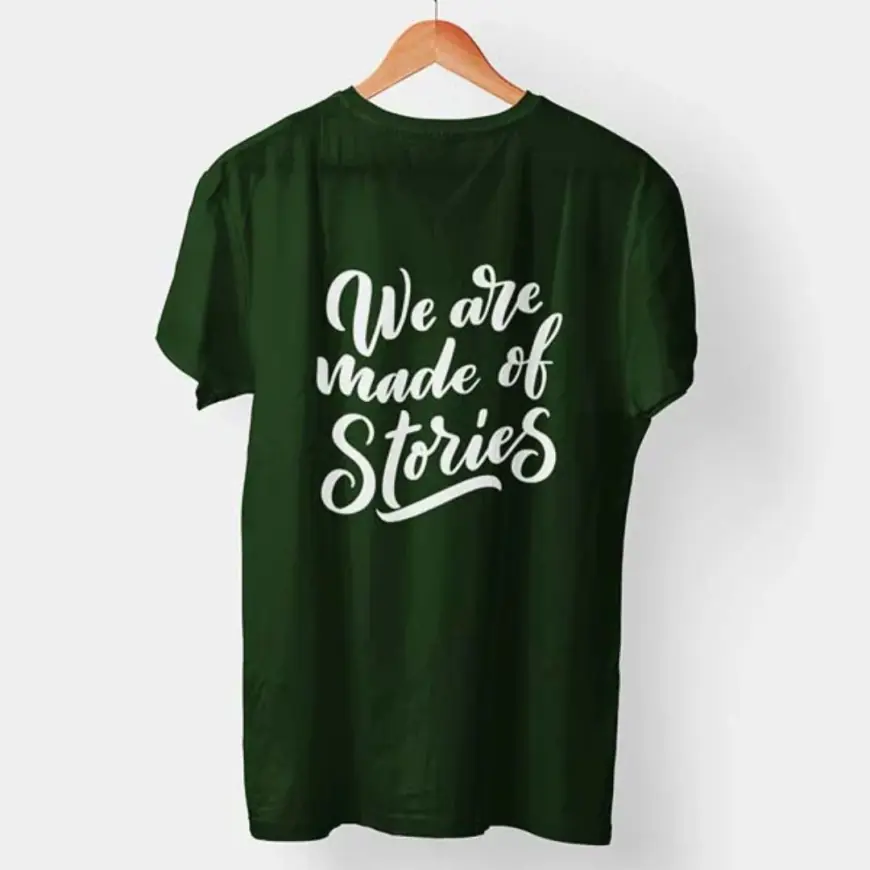The Making of Custom T-Shirts: Design to Final Stitch
Discover how custom T-shirts are made—from creative design to final stitching—in a simple, step-by-step process that blends style, fabric, and precision.

Creating a custom T-shirt is more than just adding a logo or a quote to fabric. It’s a thoughtful process that blends creativity, fabric selection, printing methods, and final stitching. Whether it's for personal style, branding, or group identity, every stage plays a vital role in turning an idea into a wearable product.
In cities where fashion and creativity meet functionality, the demand for T-shirt printing in Chennai near me has grown steadily. Custom T-shirts have become more than just casual wear—they're a medium to express personality, celebrate events, or promote a brand. So how are these shirts actually made from scratch? Let’s walk through each stage of the journey.
1. Design Begins the Journey
Everything starts with a concept. A person may want a design that reflects their style, a business might need shirts with branding, or an event planner could want something eye-catching for an occasion.
Designers usually create a digital version of the artwork using simple tools. They experiment with layout, font, and colors to make sure the design looks good on the selected T-shirt base. A key part of this stage is making sure the design suits the fabric and fits well when worn.
2. Choosing the Right Fabric and Style
After finalizing the design, the next step is choosing the T-shirt fabric. Cotton, polyester, or blends are commonly used. Cotton is breathable and soft, ideal for everyday wear. Polyester adds durability, while blended fabrics combine the advantages of both.
Apart from fabric, style also matters. You can choose from round necks, V-necks, full sleeves, crop styles, or even oversized fits. The selection depends on the target audience and the purpose of the shirt—whether it’s for comfort, work, or fashion.
3. Preparing the Shirt for Print
Once the fabric and style are locked in, blank T-shirts go through a quick pre-wash. This helps remove any residue from the manufacturing process and allows the fabric to better absorb the ink or design.
Design files are checked one more time for clarity, resolution, and alignment. At this point, test prints may be done to ensure everything comes out sharp and balanced. Once confirmed, the shirt is placed on the printing board to prepare for the next stage.
4. Printing Methods That Bring Designs to Life
There are multiple printing techniques used in the industry. Each method has its advantages depending on the quantity, fabric, and complexity of the design:
-
Screen Printing: Great for bulk production and simple color patterns. Screens are made for each color, and ink is applied through them directly onto the shirt.
-
Heat Transfer: A design is first printed on special paper and then transferred onto the T-shirt using a heat press.
-
Direct-to-Garment (DTG): Ideal for small orders and detailed, multi-color designs. The design is printed directly onto the shirt using a special printer.
-
Sublimation: Mostly used on light polyester fabrics. The ink turns into gas and blends with the fabric permanently.
Each method is chosen based on the client’s requirement, fabric type, and order size.
5. Cutting and Stitching with Precision
For fully customized T-shirts that are manufactured from raw fabric, the process includes cutting the fabric to size. Sizes like small, medium, and large are pre-measured, and patterns are cut accordingly.
The front panel, back panel, sleeves, and neckline are stitched together using high-quality machines and threads. Double stitching is often done in high-stress areas to increase durability. This is the step where quality craftsmanship really shows.
Many local units take pride in their finish. A well-experienced T-shirt manufacturer in Chennai ensures the shirts are stitched not only for comfort but also for long-lasting use.
6. Finishing Touches and Quality Check
Once the T-shirts are stitched and printed, they go through a thorough quality check. Every shirt is reviewed for stitching strength, print clarity, and overall neatness.
Extra threads are removed, minor adjustments are made, and the shirts are ironed. If the order includes special tags, labels, or embroidery, they are added during this stage. Branding tags inside the neck or at the hem are common for businesses.
7. Packaging and Delivery
After the final check, the T-shirts are folded neatly and packed. Depending on the size of the order, they may be individually wrapped or grouped in cartons. Packaging helps protect the design and fabric during transport.
The final delivery could be for an individual customer, a retail store, a school, or a corporate event—each order tells its own story.
8. A Shirt That Speaks for You
The end result is a T-shirt that’s more than just clothing. It reflects an idea, a message, or a memory. It may have started as a sketch, but through design, printing, cutting, and stitching, it becomes a complete, polished product.
Every custom T-shirt is unique, made with intention, and built to be worn with pride. Whether you want one for yourself or hundreds for an event, the process is crafted to turn your ideas into something real.
Conclusion
The making of a custom T-shirt is a detailed yet smooth process. From the design board to the final stitch, every step is handled with care. With the increasing popularity of personalized fashion, more people are looking to bring their ideas to life—whether it's through bold prints, unique stitching, or thoughtful packaging. Understanding the full process helps you value not just the finished shirt, but also the creativity and hard work that goes into making it.
What's Your Reaction?
 Like
0
Like
0
 Dislike
0
Dislike
0
 Love
0
Love
0
 Funny
0
Funny
0
 Angry
0
Angry
0
 Sad
0
Sad
0
 Wow
0
Wow
0




















































